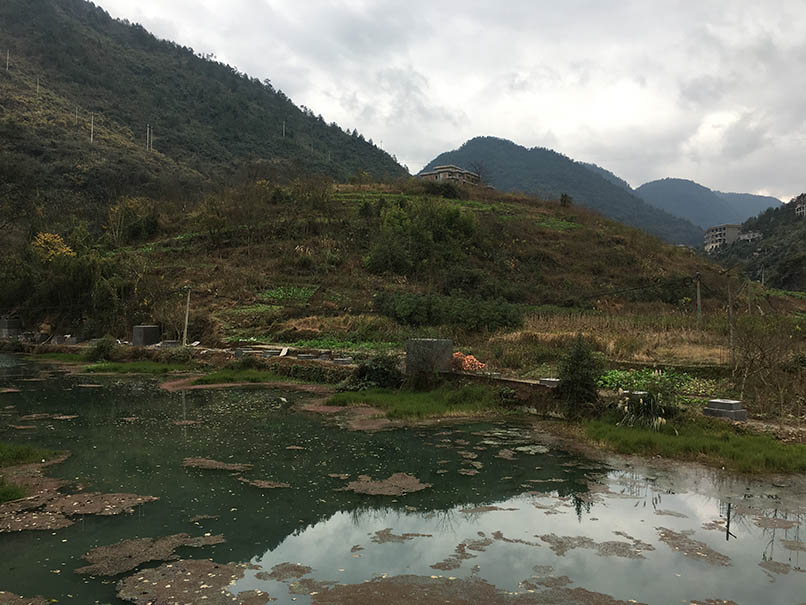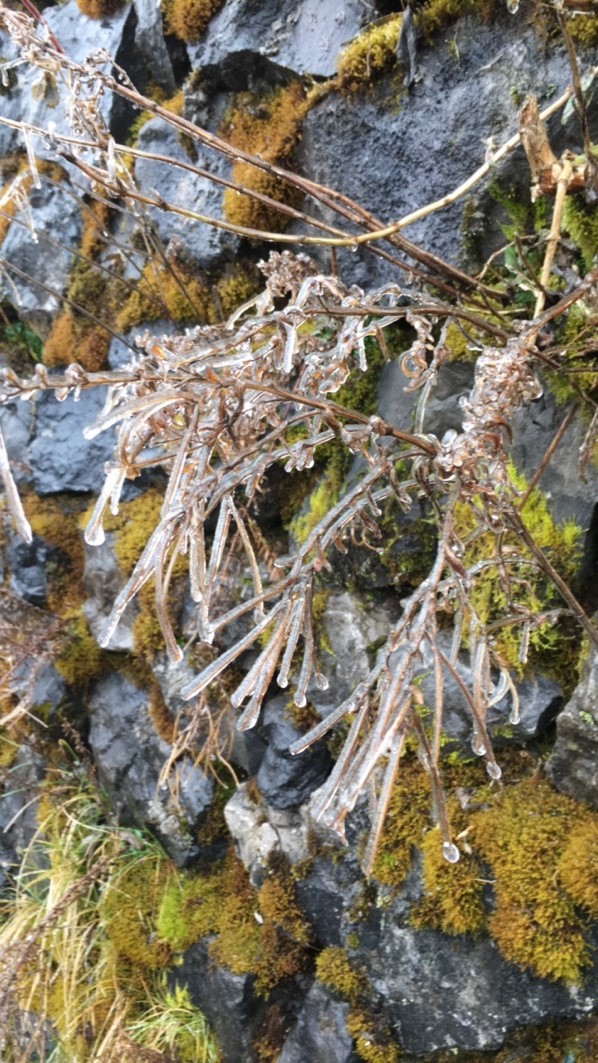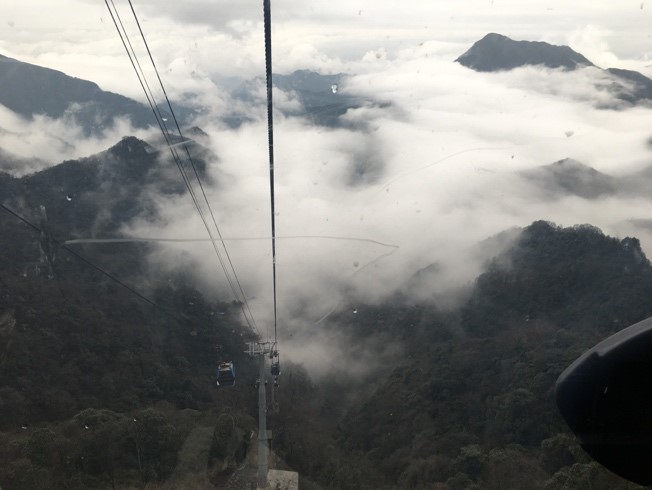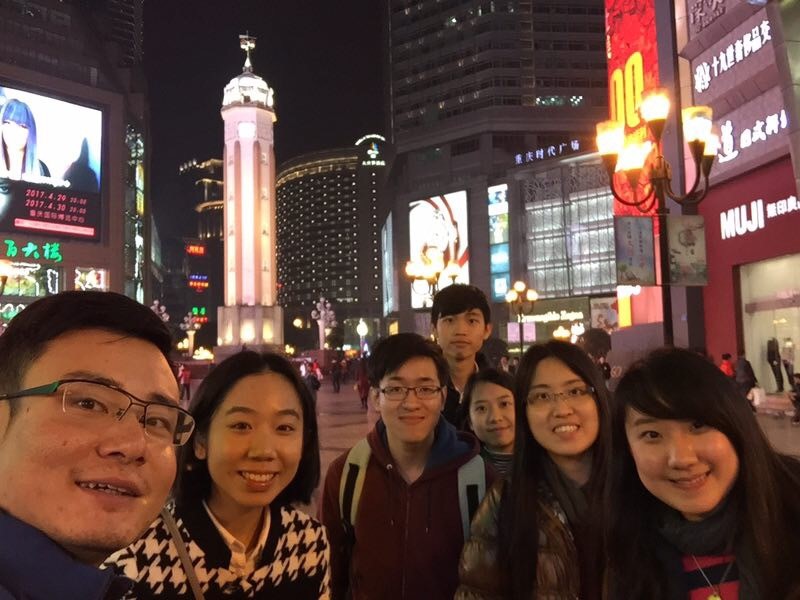



This winter, I joined a winter camp about ecology and environmental protection organized by Southwest University, one of the universities in Chongqing, China. This winter camp covered environmental issues in China, as well as the history and development of Chongqing.
I attended several talks related to the environment and resources management in China. One of the talks mainly focused on the concept of low-carbon agriculture. It is actually a ‘three-low’ agriculture: low consumption, low pollution and low emission of agricultural production. It is proposed as a way to mitigate the rising threats of energy crisis and climate change. No-tillage farming, which is a method that grows the crops without disturbing the soil through tillage and enhances the fixation of carbon and nitrogen, is one way to achieve low-carbon agriculture. Another way is new breeding techniques, such as feeding cattle with food containing nitrate and cysteine to reduce methane production (Visit http://www.japanfs.org/en/news/archives/news_id027062.html for details). Prof Jiang also mentioned some challenges of low-carbon agriculture, such as the high facility cost of no-tillage farming, organic fertilizer storage in the economic aspect, and public awareness on food safety – the last one increases the preference in developing the high quality crops for farmers and hence lowers the attractiveness in applying the method of low-carbon agriculture.
The other talk was about the rare earth metals (REM) extraction and exportation in China. REM are the group of elements that tend to occur together in nature. They are extensively applied in different realms of industries, such as manufacturing electronic gadgets and national defense equipment. However, the extraction process is hazardous to the environment and therefore China began to restrict the mining of REM by cracking down on smuggling and imposing quota on exportation. But later the export restrictions failed to execute as the Dispute Settlement Panel of World Trade Organisation (WTO) held with the reason that once the material is out of the ground, WTO member governments could not discriminate between domestic and foreign firms in giving access to the mined resource. It is not a healthy market as the price of REM is controlled by foreign entrepreneurs in the economic aspect, which leads to loss in the resources and the problem of pollution. Together with my teammates, we came up with several suggestions in solving the REM problem in China for a presentation after the talk. Subsidising those who apply the advanced technology in the extraction of REM can incentivize the replacement of the traditional technology. There are technologies reducing the damage in the extraction process but few people are willing to use them in China due to high operating cost. Providing subsidy by the government can therefore reduce the regional pollution problem. Setting high penalties for illegal activities and corruption of law enforcement agency also plays a key role in cracking down the smuggling problem of REM. High penalty means increasing the risk of doing the illegal activities. In addition, the problem of corruption in China is quite severe. Some law enforcement agencies do not follow the rule because of their own benefit brought by the illegal activity. Close and constant surveillance on smuggling and corruption can reduce the case of smuggling and corruption as well. Therefore, the environmental damage can be reduced in China and illegal activities on REM can be lowered.
On the other hand, I visited different sites in Chongqing during the camp to know more about environmental protection and development there. Though I did not go to the Three Gorges Dam during the camp, I still learned about its design by visiting the Chongqing Three Gorges Museum. The construction of Three Gorges Dam will flood a large part of the upper course of the Yangtze River, which has more than 3,000 years of history and boasts a gigantic amount of cultural heritage sites. To preserve them, the museum exhibits cultural relics that were excavated nearby in advance of the Three Gorges Dam Project. These include the paleoanthropological specimens, bronze wares from Ba and Shu states period, and stone carvings, stone Que, pictorial bricks of the Han dynasty in Chongqing and Three Gorges Region. It is understandable that at present economic development is a higher priority in China. Sustainable development, which strikes a balance between economic development and cultural preservation, would be a better option to deal with such a dilemma. The Three Gorges Dam Project may not preserve al heritage items which would lead to culture loss. At least it has made a great effort in minimizing its loss. With the rapid development of technology, I believe that development can be done with preservation at the same time in the future.
Many people think that China is a high polluting country. It is not completely true as China has already imposed many restrictions for environmental protection. Though there was haze and the air quality index ranged between 150 – 200, indicating that I was situated in a place with a moderately polluted level, as well as water pollution in some tributaries, the environment in China is now undeniably improving. I believe that China will become a place with a lower pollution level and better environment in the future.
To conclude, this was a fruitful camp that has enhanced my understanding about the history and development of Chongqing, as well as the environmental issues and protection of China.


Eutrophication occurs in a small village near Mount Jinfo due to excessive use of chemical fertiliser for agriculture



Photos taken in Mount Jinfo


Photos taken in the city centre of Chongqing